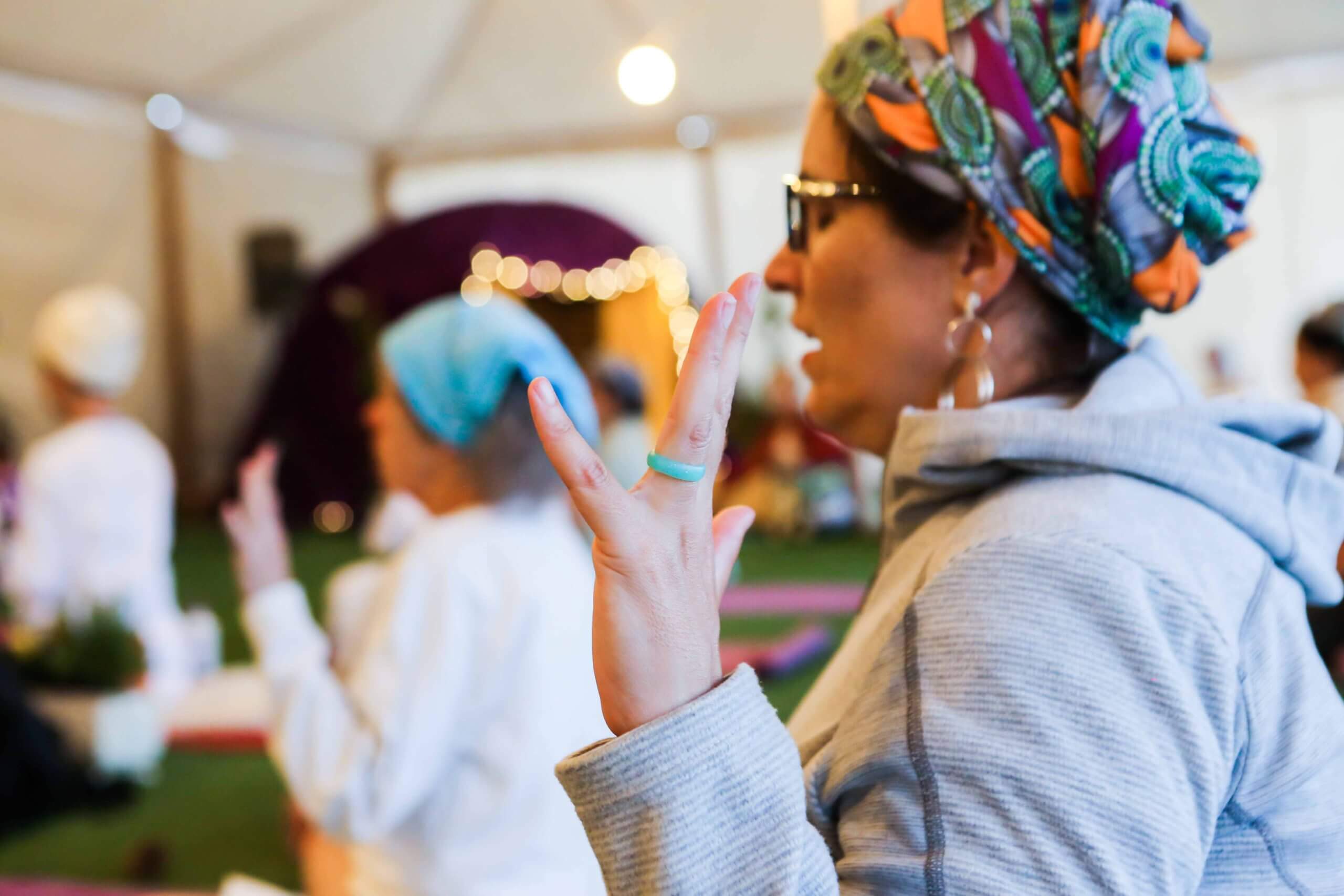Teaching Trauma-Sensitive Kundalini Yoga
As Kundalini Yoga Teachers we far too often meet students in our classes who have experienced some sort of traumatic event or who are struggling as a result of some past trauma. Most people who experience a traumatic event experience some difficulties following the event but recover. A small percentage will develop Post Traumatic Stress Disorder or PTSD. Challenges for people with PTSD might include flashbacks, a persistent need to avoid thoughts or feelings related to the trauma; distorted thinking that might include excessive self-blame or blaming others; and difficulties with arousal or reactivity.
The impact of trauma is both physical and psychological. Physical manifestations of trauma may include sleep disturbances, immune system challenges, substance abuse risk, self-harming or suicidal behavior. The psychological impact may show up in poor impulse control, difficulty controlling emotions, or a misunderstanding of social cues which negatively impacts relationships. People with PTSD also often struggle with panic, anxiety and depression.
Kundalini Yoga has a great deal to offer people who have experienced trauma and those who struggle with PTSD. Kundalini Yoga kriyas have the ability to impact both the body-based and psychological underpinnings of trauma. As Kundalini Yoga teachers, you have the possibility of assisting your students to feel safe, to help them learn to relax, and to increase their experience of self-efficacy and sovereignty. In this way the student can be restored to their Original Self—rhythmic, balanced and whole.
Building on the skills you learned as a Kundalini Yoga teacher, teaching trauma-sensitive Kundalini Yoga requires consideration to three areas of your teaching: Language, Teacher’s Qualities, and the Teaching Environment. Language refers to both what you say and how you say it. It also refers to non-verbal communication.

Language
Use your language to invite students to explore and develop greater awareness of their bodies and of their experience of the kriya. The goal would be to help your students increase their comfort with the sensations that they are feeling. While instructions stay as written in the kriya, you can invite your students to explore concrete sensations by suggesting that they notice how it feels to have both feet on the floor, or to feel their breath fill their lungs. Stay concrete. The goal at this time is to bring them comfortably to their bodies, not to send them to the ethers.
Teacher’s Qualities
In Kundalini Yoga Teacher’s Training we spend time considering the role of a Kundalini Yoga teacher. We learn about ethics and good boundaries. When teaching people who have experienced trauma, the Teacher’s Qualities are important. Be consistent in your dress, demeanor, and routine. Avoid being the trauma or yoga expert—meaning predicting the student’s response. The important point is to support the student to have their experience. We want students to move towards less reliance on external validation and more towards self-reflection and self-awareness.
Finally, the single most important gift we can give our students is how we hold them in mind. Do we view them as survivors—strong, empowered and resilient, or as victims—weak and in some way lacking?
Teaching Environment
Keep the Teaching Environment consistent and predictable. Work to increase your students’ tolerance to quiet and relaxation. Consider if the classroom has adequate space, and balance that with close proximity and creating a cozy container of safety and privacy. If you have a choice between only dim lighting and bright lighting, trauma survivors generally feel safer in well-lit rooms.
To support those who have experienced trauma, the teachings of Kundalini Yoga are rich and vast. They support healing and provide the opportunity to regain the Original Self. As Kundalini Yoga Teachers, in order to be trauma-sensitive in your teaching, consider your language, your environment and how you use yourself to create a safe and steady container for your students.
To learn more about working with people who have experienced trauma or who are struggling with PTSD, contact www.grdcenter.org
Your experience is important!
Share your wisdom with others like you. Leave your comment below